Physiological Regeneration of Skin Appendages and Implications for Regenerative Medicine
April 2012
in “Physiology”
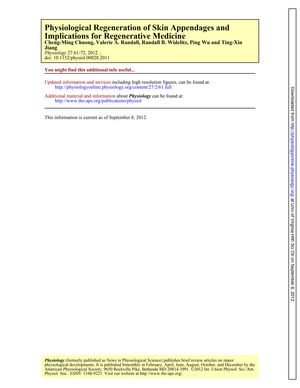
TLDR The document concludes that understanding hair and feather regeneration can help develop new regenerative medicine strategies.
The document from 2012 reviews the physiological regeneration of skin appendages, such as hair and feathers, and its relevance to regenerative medicine. It explains that this regeneration is driven by cycles of activation and quiescence of organ stem cells, with hair and feather follicles serving as models for studying stem cell activation and organ formation. The paper discusses how skin appendages adapt to environmental and life stage changes, and how these adaptations have evolved. Significant progress has been made in understanding the molecular aspects of hair and feather follicles, particularly the location of stem cells and regulation of their activity. The study also examines how hair follicle stem cells are affected by external factors like seasonal changes and systemic hormones, and how hormonal changes can differently influence hair growth or loss in various body areas. The role of dermal papilla cells in interpreting hormonal signals is highlighted, and the need for further research on the specificity of hormone response and regional specification of hair follicles is emphasized. Additionally, the document suggests that principles learned from physiological regeneration could be applied to regenerative medicine, potentially leading to new strategies for hair and feather growth and reprogramming cells for new follicle formation after injury.
View this study on journals.physiology.org →
Cited in this study

research Adipocyte Lineage Cells Contribute to the Skin Stem Cell Niche to Drive Hair Cycling
Fat-related cells are important for initiating hair growth.
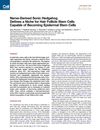
research Nerve-Derived Sonic Hedgehog Defines a Niche for Hair Follicle Stem Cells Capable of Becoming Epidermal Stem Cells
Nerve signals are crucial for hair follicle stem cells to become skin stem cells and help in wound healing.
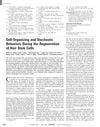
research Self-Organizing and Stochastic Behaviors During the Regeneration of Hair Stem Cells
Hair stem cell regeneration is controlled by signals that can explain different hair growth patterns and baldness.
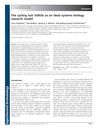
research The cycling hair follicle as an ideal systems biology research model
The hair follicle is a great model for research to improve hair growth treatments.
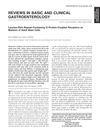
research Leucine-Rich Repeat-Containing G-Protein-Coupled Receptors as Markers of Adult Stem Cells
Certain proteins, Lgr5 and Lgr6, are important markers of adult stem cells and are involved in tissue repair and cancer development.
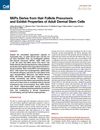
research SKPs Derive from Hair Follicle Precursors and Exhibit Properties of Adult Dermal Stem Cells
SKPs are similar to adult skin stem cells and could help in skin repair and hair growth.
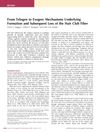
research From Telogen to Exogen: Mechanisms Underlying Formation and Subsequent Loss of the Hair Club Fiber
Hair shedding is an active process that could be targeted to treat hair loss.
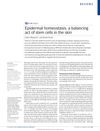
research Epidermal homeostasis: a balancing act of stem cells in the skin
Skin stem cells are crucial for maintaining and repairing the skin and hair, using a complex mix of signals to do so.
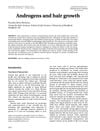
research Androgens and hair growth
Androgens can both increase and decrease hair growth in different parts of the body.
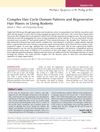
research Complex Hair Cycle Domain Patterns and Regenerative Hair Waves in Living Rodents
Mice hair growth patterns get more complex with age and can change with events like pregnancy or injury.
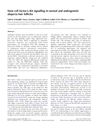
research Stem cell factor/c-Kit signalling in normal and androgenetic alopecia hair follicles
SCF and c-Kit decrease in AGA hair follicles, possibly affecting hair pigmentation and growth.

research Wnt-dependent de novo hair follicle regeneration in adult mouse skin after wounding
Hair follicles can regrow in wounded adult mouse skin using a process like embryo development.
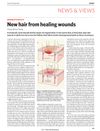
research New hair from healing wounds
Adult mice can grow new hair from skin wounds.
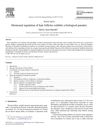
research Hormonal regulation of hair follicles exhibits a biological paradox
Androgens can both stimulate and cause hair loss, and understanding their effects is key to treating hair disorders.
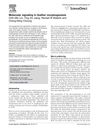
research Molecular signaling in feather morphogenesis
Feather growth and regeneration involve complex patterns, stem cells, and evolutionary insights.
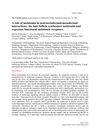
research A role of melatonin in neuroectodermal‐mesodermal interactions: the hair follicle synthesizes melatonin and expresses functional melatonin receptors
Hair follicles produce and respond to melatonin, affecting hair growth and sensitivity to estrogen.
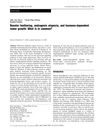
research Rooster feathering, androgenic alopecia, and hormone-dependent tumor growth: What is in common?
Sex hormones affect hair and feather growth and may help manage alopecia and hormone-dependent cancers.
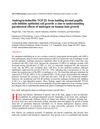
research Androgen‐inducible TGF‐β1 from balding dermal papilla cells inhibits epithelial cell growth: a clue to understanding paradoxical effects of androgen on human hair growth
Androgens may cause hair loss by increasing TGF-beta1 from scalp cells, which inhibits hair cell growth.
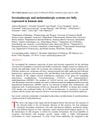
research Serotoninergic and melatoninergic systems are fully expressed in human skin
Human skin can make serotonin and melatonin.
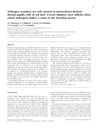
research Androgen receptors are only present in mesenchyme-derived dermal papilla cells of red deer (Cervus elaphus) neck follicles when raised androgens induce a mane in the breeding season
Red deer only have androgen receptors in neck hair cells for mane growth during breeding season.

research Expression of mRNA for androgen receptor, 5alpha-reductase and 17beta-hydroxysteroid dehydrogenase in human dermal papilla cells
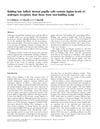
research Balding hair follicle dermal papilla cells contain higher levels of androgen receptors than those from non-balding scalp
Cells from balding scalps have more androgen receptors than cells from non-balding scalps.
research Androgen Induction of Follicular Epithelial Cell Growth Is Mediated via Insulin-like Growth Factor-I from Dermal Papilla Cells
Male hormones promote hair cell growth by using a growth factor from nearby skin cells.
research Cultured dermal papilla cells from androgen-dependent human hair follicles (e.g. beard) contain more androgen receptors than those from non-balding areas of scalp
Beard hair follicles have more androgen receptors than non-balding scalp hair follicles.